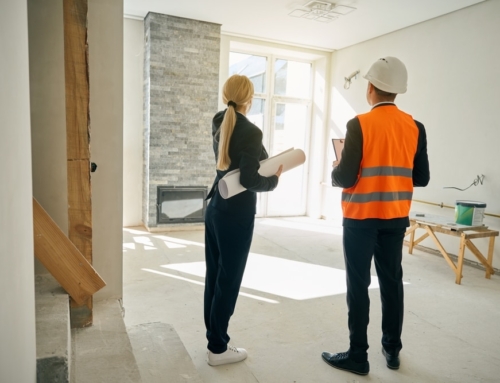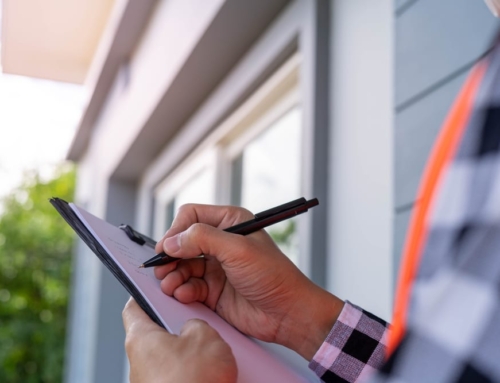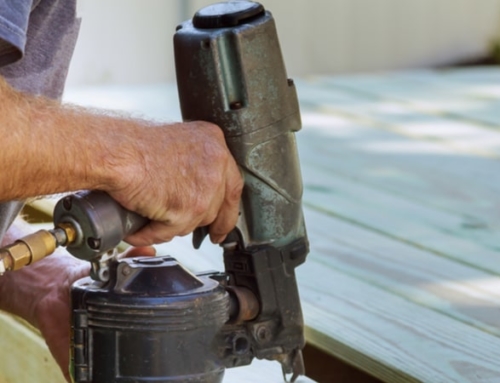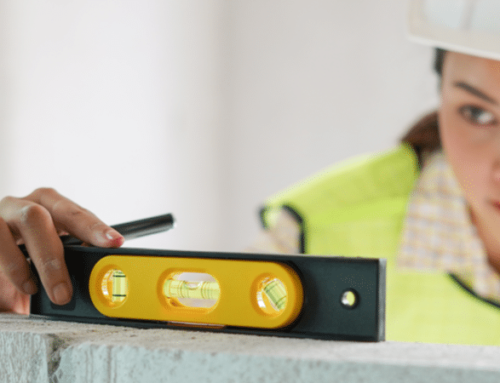If you’ve decided you want to live in something new (rather than an existing home), you have two choices. You can buy a home in a new construction subdivision, or you can buy a piece of land and hire someone to build a home to your own specifications.
Either way, here are some smart steps you should take to ensure that the new house you buy or build actually meets all of your needs, and perhaps includes a few items and amenities that have been on your wish list:
Consider the location. Whether you buy new or build on your own site, choosing the right location will help determine how quickly your home will appreciate and whether you’ll have an easy or tough time selling it down the line. Think about location amenities, crime rate, shopping, public services, transportation, commute, and, of course, the school district. When purchasing a piece of land on which to build, you should work with an attorney, architect and contractor to officially determine whether local zoning laws will allow you to build the house you really want. If you can’t build what you want, you might as well find another lot. If you find a lot, but have to tear down a house, don’t forget to include the cost of the teardown in your budget.
Select a good developer. In the rush to capitalize on the hottest market in years, some new construction developers are building homes that aren’t exactly top quality. You’ll want to find a developer whose work has stood the test of time. The only way to do that is to talk to owners of homes the developer built 2, 5, and even 7 years ago. Find out what kind of problems these owners had and if the developer quickly came back to fix what went wrong. Was the developer easy to work with or difficult? Did he or she return phone calls? Good communication skills are essential. If you’re building from scratch, you’ll want to choose a developer who, preferably, has enough funds to pursue the project without using any of yours. If you’re doing a significant project, pay the extra money and use a local title company to pay the bills and check lien waivers. The peace of mind is worth the dollars you’ll spend.
Hire an architect whose work you like. If you’re buying in a development, the developer will typically have several home plans from which you can choose. You may also be able to make minor modifications to the plan for a fee. If you’re building your own home, you will probably have to hire an architect, unless the builder you hire has a house plan you think will work for you. But don’t skimp here. If you’re building a new home, you’ll want to build something that exactly meets your needs. Talk to friends and acquaintances and see who they recommend. Talk to several architects and spend the time to look at homes each has designed and built. If you don’t like the way the home turned out, don’t hire the architect. You should also talk with past clients about how happy they were working with the architect and how things came out.
Have a real estate attorney review the contract. When building a new home, it is vital that you have a contract that protects you should things not turn out the way you plan. You will need to hire a real estate attorney who has had plenty of experience negotiating contracts with architects, builders, and developers. If you’re building on your own land, consider creating a system where the contractor gets a bonus for finishing the project on time or early, and is penalized if he is late.
Pay as little upfront as possible. The less cash you risk before closing, the better off you are, real estate attorneys say. So if you’re buying in a subdivision, try to put down just 5 percent up front or less. And, insist that cash be held in a separate escrow account. If a developer goes bankrupt, and your funds are mixed in with the developer’s cash, you may lose your money. But if the funds are separated, your down payment might be protected (though you may lose the cash you prepaid for “extras” and “upgrades”). If you’re building a home with a developer, you’ll want to put as little down upfront as possible. You should be using a contractor who can afford to use his money to build your home, not yours. Try to pay for things after they have been built. For example, avoid giving the contractor $50,000 before anything has been done. Wait until the contractor has actually spent that money at the job site.
Check the specs. Whether you’re buying from a developer or hiring a contractor, you’ll want to double check every single model, specification, and appliance going into your home. Make sure all of the windows are the right sizes, that you’re getting the tile, countertops, faucets and hardware you really want. The best time to do this is before anything has been ordered. Changing the floor tile after it comes in can mean a 6-week delay in your project.
Make changes on paper. Once you start building, it becomes exponentially more expensive (not to mention time-consuming) to make changes. The best time to make a change is when you’re still working off of the plans. While every job has some changes, your project will get built faster and with fewer errors if you make changes before the walls go up.
Create a paper trail. Whenever you need to communicate with the developer or contractor about your project, you should say what you have to say in writing. If you order a change to the project, write the developer a memo about it. Not only will you be creating a paper trail, but there are literally thousands of decisions that are made in the course of building a new home. It would be impossible for anyone to keep all the details straight. By putting it on paper, you’ll have a chance to really think through what you’re trying to say and the developer or contractor will have a reference that he or she can go back to time and time again. And, in the event of a problem, you’ll have a way to determine exactly what was said and when.
Visit the site frequently. If you’re buying a home in a subdivision, you should visit the site weekly during the early stages of construction and more frequently as the home nears completion. If you’re hiring a contractor to build a house on your land, you should be in daily contact with the contractor and plan to spend as much time as possible at the site. If you’re there, you’ll be able to answer questions on the spot, which will eliminate problems down the line.
Hire a home inspector. You may be buying a newly-built home, but that doesn’t mean the home was built to code or is safe to live in. One of the best things you can do is hire a professional home inspector, another contractor, or an architect, to inspect your home to make sure that the home being built is what the developer agreed to build. For a fee, the architect will often stay on board and oversee the construction. If you’re going with a professional home inspector, you’ll want him or her to visit the site at least four times: after the foundation is poured, when the walls go up, when the wiring is in, and just before you close on the home.
Create a punch list. A punch list is an itemization of things that either aren’t finished, aren’t working properly or don’t look right in your new home. The punch list is usually agreed to by the developer before the job is finished and becomes part of the closing documents. But make sure you include everything you want the developer to fix. Once the punch list has been agreed to, the developer may not come back and fix other items (other than warranty items) without charge. If you’re building from scratch, you’ll want to hold off paying the contractor in full (which should be all profit to him) until the work is completed.
Holdback funds at closing if the work isn’t complete. Once in awhile, all of the work that is required in the contract will not be completed. If you live in the northern half of the country, and you’re scheduled to close on your home in December, it’s likely that the developer will not put in the landscaping until the following Spring. You may wish to hold back some funds in an escrow account to cover the cost of installing the landscaping should the developer not follow through and finish the work. Obviously, developers would rather you not hold back funds, but it is your final protection. Consult with your real estate attorney for further details.
Of course, once you’ve moved into your new home, the hardest thing in the world is to learn how to relax and enjoy it. Although most new homes are completed before you move in, it may take several months to buy and hang your light fixtures and window treatments, and arrange your furniture.
In other words, it could be awhile before your new home really feels like home.






Leave A Comment